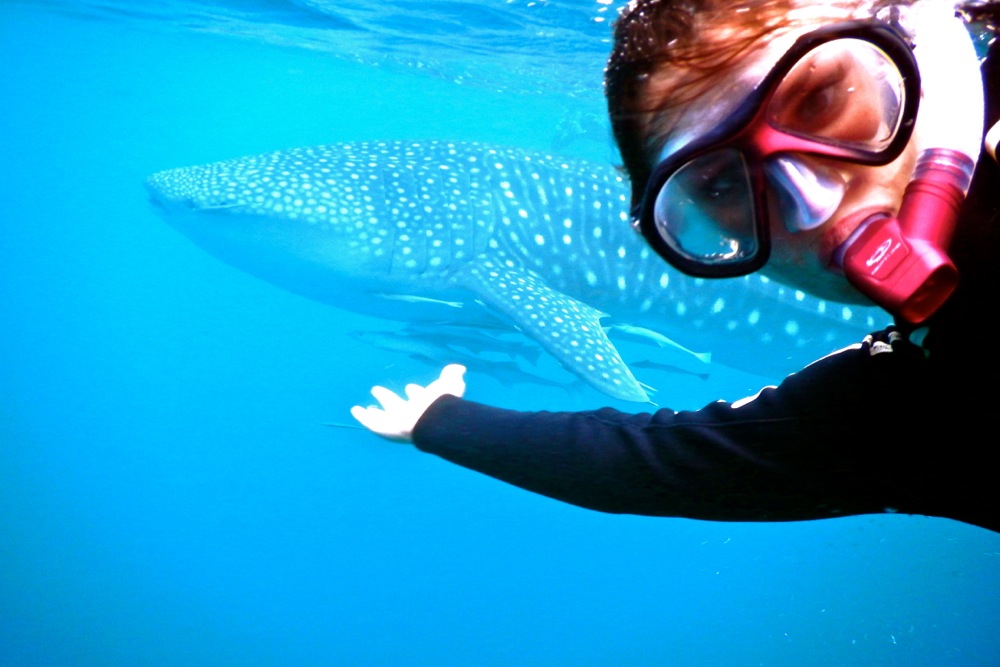When I imagined the response I would give when asked how swimming with whale sharks felt, I was expecting that response to live up to the experience. I would choke up, maybe gasp. Through teary eyes I would say the most wonderful things that would so aptly describe the moment.
Minutes after climbing back on the boat, the question came. And to my surprise, mustering up emotion of any kind was very difficult. Where was the one perfect word? It should have just bubbled out of me as effortlessly as the water that flowed in and out of the mouth of the shark. The word that would describe how it felt to turn my head to the left and realize I was staring down the largest fish in the world.
